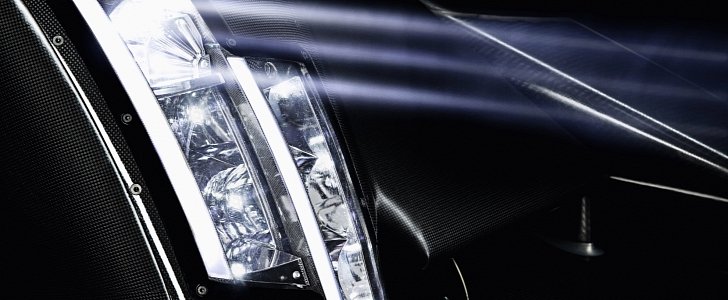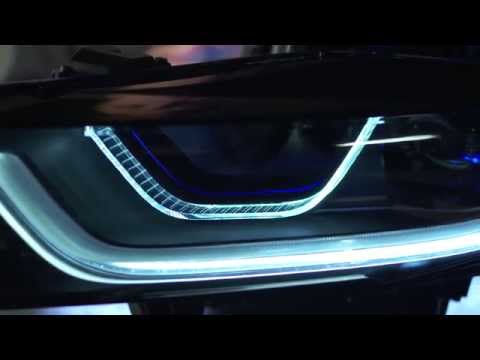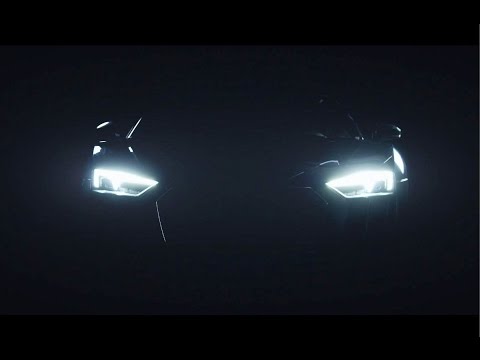Automotive headlamps have come a long way since the 19th century, but how much can a new car buyer benefit from the technology advancements? We’ve put together a short list of the best headlights available on the market for the 2016 Model Year. To make everything easier to see (pun indented), we have split the list into five segments for less clutter. Thankfully, the five headlamps we selected aren’t just for the five models we mention below, so the manufacturers of the particular cars do offer the technology for other products in their range. However, we did select them based on the way they look and the way the manufacturers managed to integrate the new technology into the designs of the cars that have the most advanced headlamps in their segments. We have to mention that, as we browsed through the headlights available for new vehicles of the 2016 Model Year, we noticed an increase in the full-LED versions as optional equipment. The cars that do offer this technology as a standard feature are in the premium segment and have hefty price tags, but the technology is available on more affordable vehicles as well. Obviously, in the second case, it is offered as optional equipment and it is not as cheap as getting parking sensors, but once you experience Full-LED headlamps, you won’t want to go back to regular lights, even if you have a Bi-Xenon setup. Trust us on this one, LED headlights will make roads safer in the coming years and will replace all halogen bulbs shortly. Meanwhile, Laser lights have started to appear on some top tier cars, and these will be the Bi-Xenon headlamps of the 21st century. A few automakers have LED lights as optional equipment for several cars in their portfolios, and the next big thing seems to be the OLED technology. The latter is not included in this article, as it has been featured on concept cars and is attributed to the rear lights. We expect it to come to production in the coming years, most likely from German manufacturers like Audi, BMW, and Mercedes-Benz. Mazda 2 The Japanese carmaker offers LED headlights as optional equipment in the Mazda2 range since the model was released. The Mazda2 came to market as an MY2015 car, and its optional LED headlamps are excellent. Not only do they come with a high-beam assistant but they also provide a broad range and fresh design. We appreciate the way these lights have been integrated into the car’s design, and they make this Mazda stand out in the crowd. Opel Astra Opel’s new Astra was first shown in fall 2015 as an MY2016 car. As optional equipment, the Astra K is available with LED Matrix headlamps. The latter were first available on top-of-the-range Audi models, but Opel has managed to squeeze the LED Matrix headlamp technology into a more affordable car. The Astra is the only model in the compact segment to be available with such headlights. While we did not get the chance to experience this technology in real life, we can tell you that LED Matrix headlamps are an advancement on “conventional LEDs,” and they come with a high-beam assistant that’s smarter than the one found in regular LED lights. Naturally, the LED Matrix technology is more expensive than “classic LEDs,” but it may become affordable once more people buy cars fitted with it. We also appreciate the design of the Astra K with these LED Matrix headlamps as a modern look. Mercedes E-Class Mercedes-Benz also features headlights with the LED Matrix technology, but they call it Multibeam LED. On the 2017 E-Class, the optional Multibeam LED headlamps each have 84 individually controlled LEDs. Thanks to this intelligent (and complex) solution, the new E-Class will be able to provide optimum light distribution in any driving situation. Since 84 LEDs per headlamp is a lot, the carmaker can program the system to do more than others that have fewer LEDs. The new E-Class is not the first Mercedes-Benz to feature Multibeam LED, as the technology was first introduced on the facelift of the CLS. However, the E-Class has more LEDs per headlight, so it earns its spot here will full merits. Since the light emitting diodes (that is what LED stands for, by the way) have been spread out, Mercedes-Benz can use more eccentric headlight designs. Considering they are a premium car maker from Germany, they chose a more sober look, that happens to suit the E-Class very well. BMW 7 Series The new generation 7 Series from BMW is not the first model in the Bavarian brand’s portfolio to be available with Laser headlamps. That honor went to the i8, which happened to be the first production vehicle with Laser headlights. Laser Light features an increased intensity when compared to LED light, and headlamps which use this technology are more energy-efficient than their LED counterparts. BMW claims that the laser light beam of the i8 can light up to 600 meters (1,968 feet), more than double the range of the standard LED headlights of the i8. Meanwhile, the 7 Series flagship sedan received the technology and provided the same feature for the driver of the luxurious BMW. We could have chosen the i8 in this article just as well as the 7 Series, but then we would not have had room for our next subject. Audi R8 V10 Audi was in a big battle with BMW over who launches the first production vehicle with Laser headlights. BMW won at the time, but Audi did offer Laser lights on the LMX version of the previous generation R8. The new Audi R8 is also available with Laser lights, while LED headlights are standard. Just like on the BMW i8, the optional Laser headlamps of the 2016 R8 V10 have a range of up to 600 meters (1,968 feet). Audi pushed the idea with dynamic turn signals on the front lamps, which are composed of LEDs that are progressively illuminated to show the direction the vehicle is signaling. So, if the driver turns on the right turn signal, the headlight on the right of the car will move a beam of light from the left to the right. The entire action described in the previous phrase happens inside the turn signal, not in the whole headlight. BMW i8 Laser headlamps











